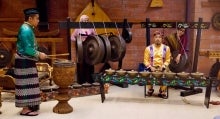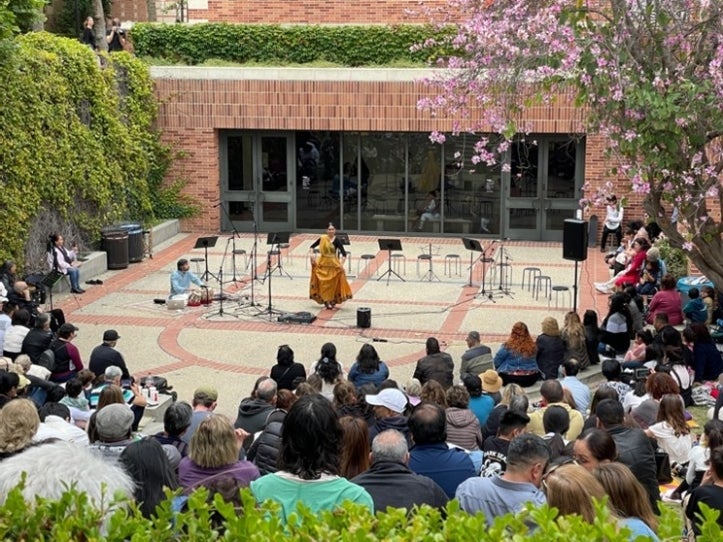A World of Asian Percussion and Dance: Immersive Workshops for Educational Institutions in Los Angeles

A World of Asian Percussion and Dance: Immersive Workshops for Educational Institutions in Los Angeles by Helen Rees and Learsi Martinez, UCLA Department of Ethnomusicology.
Figure 1. Members of Ube Arte performing in the Gamelan Room at UCLA for the annual meeting of the Society for Ethnomusicology Southern California and Hawai'i Chapter, 5 March 2016. From left: Marlo Campos, dabakan; Mary Talusan, gandingan; Bernard Ellorin, kulintang; Eleanor Lipat, agong. Photo by Helen Rees.
In January 2023, Professor Rees applied successfully for a UCLA Chancellor's Arts Initiative Grant to fund six educational workshops in percussion and dance traditions of Asia. They were to be held between June and December 2023 under the auspices of (a) a public high school within Los Angeles County, (b) the non-profit Sounds Like LA (SLLA, formerly Santa Monica Youth Orchestra), and (c) Pilipino Studies/Samahang Pilipino at UCLA, with a final Zoom feedback session with several of the participants. In this report, Rees and Martinez set out
- The background to and rationale for the project
- The choice of workshop locations, traditions, and artists
- The logistics of the project and manner of documentation
- A description of the six workshops
- An analysis of the Zoom feedback session
- Conclusions
To read the entire report, see attached pdf, below.

Figure 2. Sufi Raina and Miles Shrewsbery perform at the beginning of the world music concert, to a packed Amphitheater, 11 June 2023. Photo by Helen Rees.





